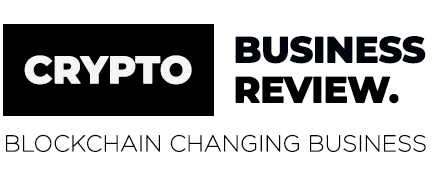*this is an IBM post, Written by Dr. Patrick Welch
Education in veterinary medicine, as with many professions, is undergoing a transformation. This transformation is characterized by a competency-based approach to learning that focuses on skills and achievements as opposed to traditional grading systems. When applied to both formal educational programs and continuing professional development, this approach can accelerate careers and enhance lifelong learning for veterinary professionals. As I described in my previous article, the challenge to executing this vision has been identifying a technology framework that is both robust and dynamic enough to serve as the foundation for such a solution.
I believe blockchain is the ideal enabling technology to address this challenge. As the vehicle for our envisioned veterinary learning credential network, blockchain can transform interactions between all key stakeholders, including education providers, learners, regulatory bodies, associations, and employers by providing a secure digital framework for sharing validated and searchable learning credentials, skills, and certifications.
The first step towards this solution was to develop the veterinary industry ecosystem by engaging the leaders of various veterinary organizations. We spent nearly two years sharing our story and building a consortium of organizations focused on the development of the veterinary learning credential network (VLCN).
Growing our network through a solutions-based process
As someone who has had an evolving passion for innovation throughout my career, I have often found myself involved with new and interesting ideas and solutions that have tremendous potential to add value to teams or organizations. Crossing the chasm between potential and actual value often hinges on creating engagement and buy-in from others. The veterinary LCN initiative envisioned by our founding team, represents a great example of this, and we learned a tremendous amount throughout our journey from concept to reality.
One of the key challenges we encountered during this process — which consisted of both small group meetings and conversations, as well as larger presentations to associations and membership organizations — were the questions (and sometimes confusion) that blockchain brought to the topic. In our initial presentations we focused on the technological aspects of the solution, which ultimately complicated our message.
Over time, we learned that the technology was secondary to the philosophy of the solution, and that our energy was better spent sharing our vision on the impact of this solution — a learner-centered model designed to transform interactions between ecosystem participants with the goal of enhancing learning outcomes and career opportunities. This proved to be an incredibly valuable shift in our messaging and helped create the engagement and momentum with our stakeholders necessary to create a path forward.
Our network design journey
Once we identified our key stakeholders, we needed to create alignment among the entities, and the network design workshop was an important step in this process. The initial organizations that have come together to collaborate with Ethos, VetBloom and IBM on the solution include The Association of American Veterinary Medical Colleges (AAVMC), the American Association of Veterinary State Boards (AAVSB), The American Animal Hospital Association (AAHA), The International Council for Veterinary Assessment (ICVA), IDEXX, and Mars Veterinary Health.
This group represents an unparalleled consortium of thought leaders from throughout the veterinary profession, encompassing all aspects of the professional lifecycle for veterinary team members — from their formative educational years through their lifelong growth and professional development. It is incredibly rare to see such a broad and diverse group of stakeholders engaging around an idea; a collaboration that truly speaks to the importance, timeliness, and potential of this vision.
The team did a wonderful job of facilitating the sessions over two days — strengthening the group’s understanding of both the veterinary LCN and the underlying blockchain technology. Our time together was spent unpacking the concept of the “industry circle”, ensuring that the ecosystem we had devised was representative of our profession and involved the right stakeholders.
In addition, and perhaps most importantly, the members of our new collaborative worked to create a shared understanding of what a solution could look like — exploring the group’s hopes, fears, and questions during this process. As a final deliverable, we left the workshop with a veterinary LCN pilot outline for the industry.
A blockchain for the veterinary profession
Academic leaders within the veterinary profession have been working to implement a modern competency-based framework for veterinary education. The initial work on our minimum viable product (MVP) leveraged these foundational efforts, allowing us to map this competency framework to the traditional academic curriculum for the Doctor of Veterinary Medicine (DVM) degree. Through this work, we were able to demonstrate the value the veterinary LCN could bring when implemented more broadly within our industry, addressing challenges for post-graduate veterinary professionals, and ultimately transforming talent management, credentialing, and licensing in the veterinary profession.
As is common in many professions, the traditional talent management structure in veterinary medicine is fraught with inefficiencies, leading to high transaction costs, processing delays, challenges in connecting talent to industry needs, and a lack of trust in the validity of credentials across learners, issuers, and employers. The veterinary LCN seeks to address these challenges, allowing veterinary professionals to manage their professional growth and development by documenting their aggregated competencies gained over time through both formal educational programs and practice experience. This enhanced granularity enables individuals to differentiate themselves and provides employers the opportunity to search for job candidates based on skills, allowing a more efficient pathway to connect candidates to job opportunities.
From a regulatory perspective, as a blockchain-enabled solution, the veterinary LCN will provide a single source of truth for validated and searchable learning credentials and skills, reducing the time and cost of verifying, issuing and searching credentials, with the ultimate goal of maintaining and sharing accurate, up-to-date credential information across the network.
It’s exhilarating to envision a future where we adopt a competency-based approach to learning at scale, where learners can manage their education and skills, and employers can identify and connect with these individuals by searching for these verified skills and credentials. While we have a long road ahead to fully realize these goals, we’re enthusiastic about the journey and recognize the opportunity we have to transform our industry.
Learn how industries are revolutionizing business with IBM Blockchain
Dr. Patrick Welch
Veterinarian – Chief Executive Officer for VetBloom






